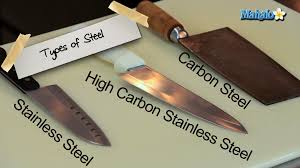When we say iron, we mostly mean steel, a stronger combination of iron and carbon.
Steel is a without post-treatment malleable alloy of iron with a reduced carbon content (0.5 to 2%, usually < 1.6%).
Cast iron has a higher carbon content, namely + 2%, and is not malleable.
There are more than 2,500 different alloys with these two elements, mostly also with other components.
“The finest steel has ever gone through the hottest fire.” (John N. Mitchell)
Alloys and additives
 Steel has many properties that are depending on the application more or less desirable: brittleness, corrosion resistance, elasticity, hardness, hardening, heat resistance, durability cut, weldability, yield strength, impact resistance, wear resistance, ductility, malleability, melting point, chip formation, strength, strength in heat, toughness.
Steel has many properties that are depending on the application more or less desirable: brittleness, corrosion resistance, elasticity, hardness, hardening, heat resistance, durability cut, weldability, yield strength, impact resistance, wear resistance, ductility, malleability, melting point, chip formation, strength, strength in heat, toughness.
Different elements in the composition can alter the properties: manganese, silicon, sulfur, phosphorus, nickel, vanadium, chromium, molybdenum, cobalt, tungsten. The last 5 provide better hardness and strength. Molybdenum is not conducive to the malleability.
Tungsten makes it more heat resistant. Vanadium improves elasticity and cutting properties.
The strength or hardness of the steel is determined by the amount of carbon.
Different grades of (carbon) steel are thus obtained (main European types, from Low Carbon tot High Carbon):
Structural steel containing 0 to 0.3% carbon (trusses, pipes...),
machine steel has 0.3 to 0.6% C (gears, shafts,..) and
tool steel 0.6 to 1.5% C. The latter may still be divided into:
1st steel for impact or shock tool (0.6 to 0.9% C) (hammer, chisel, drill...)
2nd steel for cutting tools (0.9 to 1.2% C) (plane cutter, scissors, knife...)
3rd steel measuring tools (1.2 to 1.5% C) (file, tap, caliper,... (fragile)).
High Speed Steel ( HSS) retains its hardness at higher temperatures. This makes it very suitable for tools that can become hot, such as metal and concrete drills.
